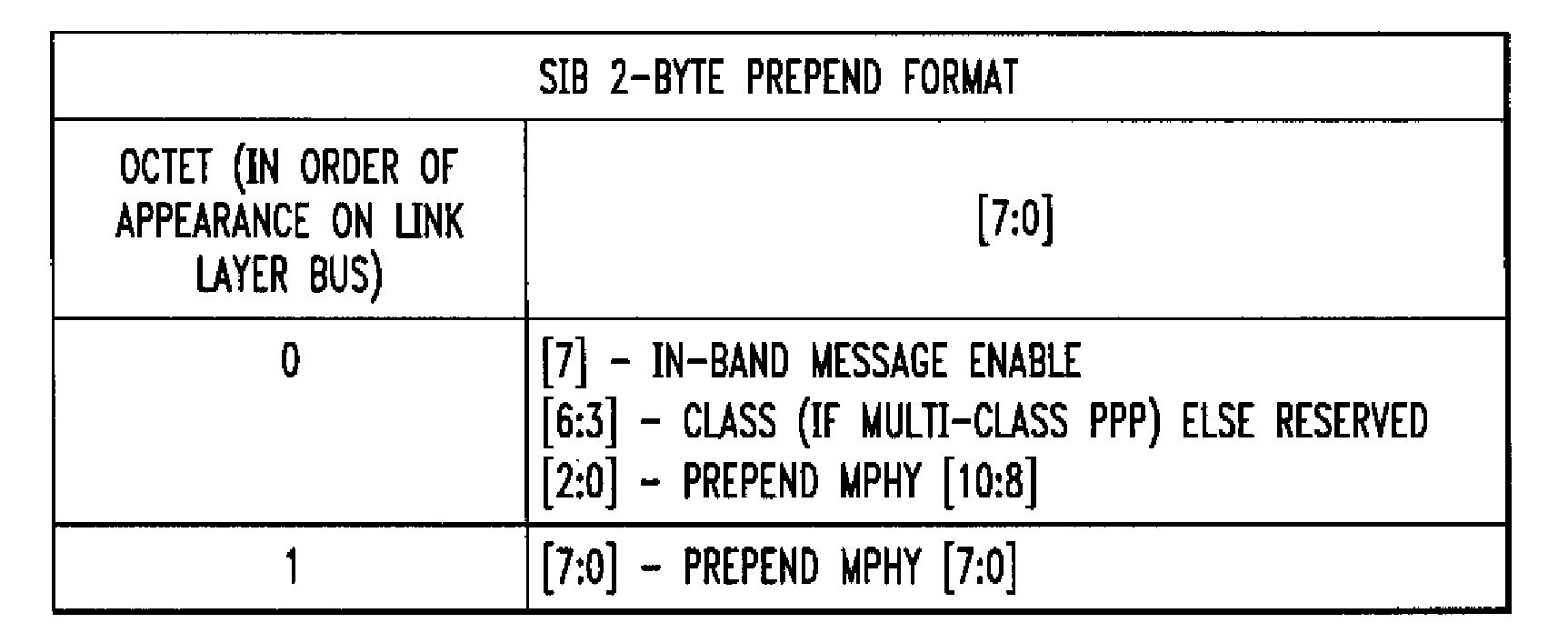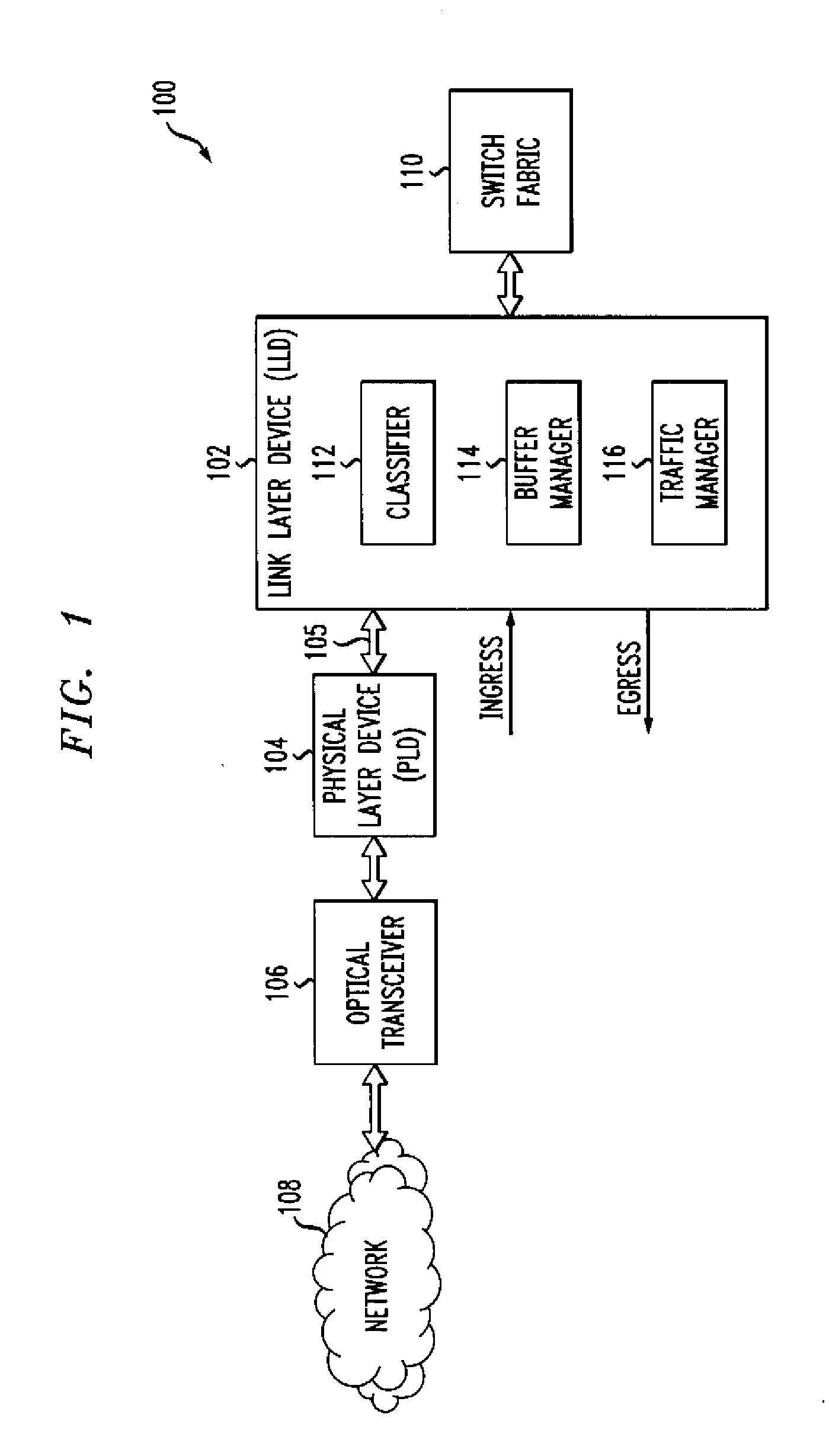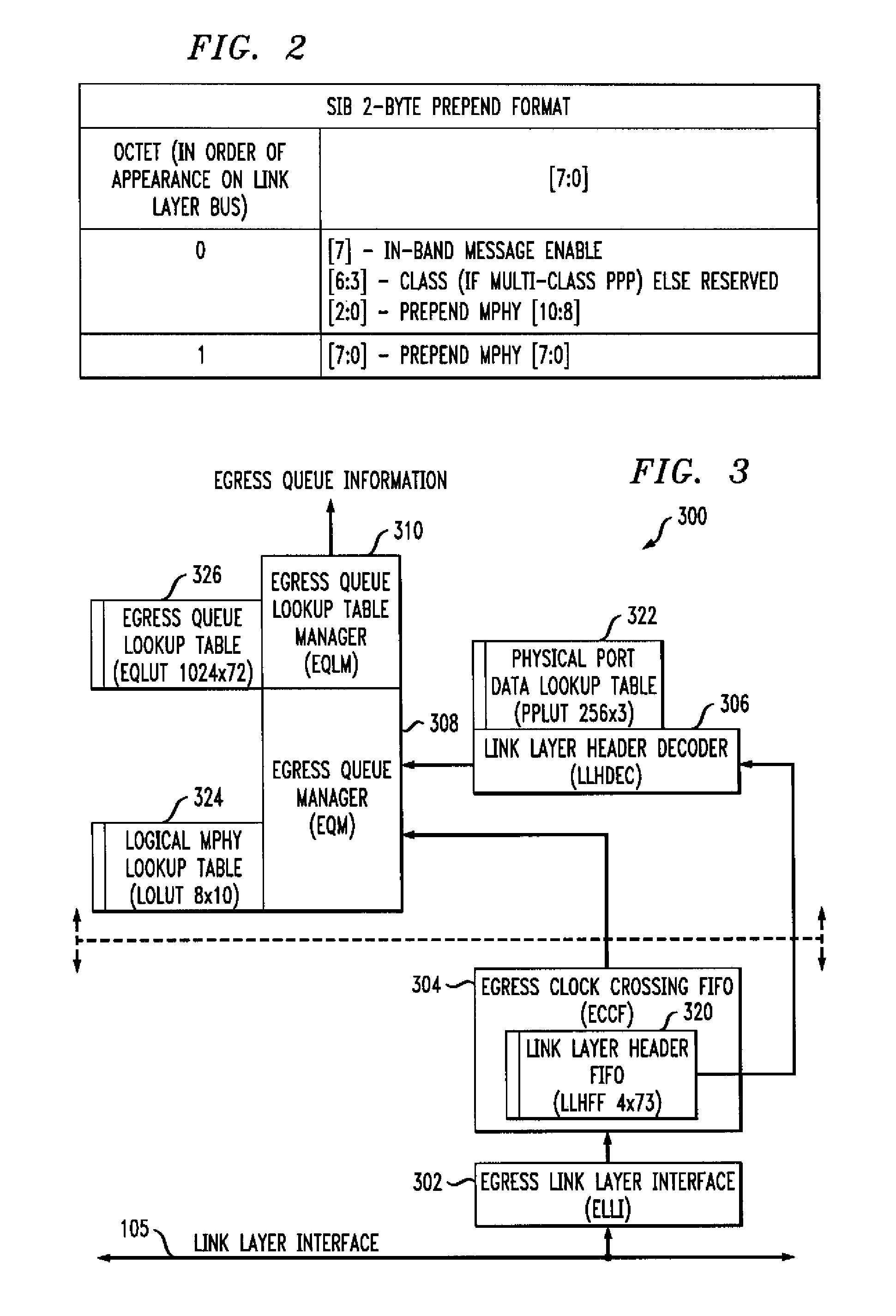Port Addressing Method and Apparatus for Link Layer Interface
a port addressing and link layer technology, applied in electrical equipment, digital transmission, data switching networks, etc., can solve the problems of increasing package cost and power for both the link layer device and the physical layer device, increasing the number of pins, and increasing the number of mphys that can be addressed without a significant increase in pins, so as to avoid excessive memory requirements and bandwidth reduction of the conventional any-phy interface, improve the addressing of the physical layer device port, and improve the effect of the physical layer
- Summary
- Abstract
- Description
- Claims
- Application Information
AI Technical Summary
Benefits of technology
Problems solved by technology
Method used
Image
Examples
Embodiment Construction
[0026]The invention will be illustrated herein in conjunction with an exemplary network-based communication system which includes a link layer device, a physical layer device and other elements configured in a particular manner. It should be understood, however, that the invention is more generally applicable to any system in which it is desirable to provide improved port addressing as described herein.
[0027]The term “in-band” as used herein is intended to include, by way of example and without limitation, an arrangement in which additional information is transmitted utilizing an existing standard interface, such as an SPI-3, POS-2 or other similar interface, between a link layer device and a physical layer device, where the additional information is transferred as part of the payload but later dropped after being used for a particular purpose.
[0028]A “link layer device” or LLD as the term is used herein refers generally to a network processor or other type of processor which perfor...
PUM
 Login to View More
Login to View More Abstract
Description
Claims
Application Information
 Login to View More
Login to View More - R&D
- Intellectual Property
- Life Sciences
- Materials
- Tech Scout
- Unparalleled Data Quality
- Higher Quality Content
- 60% Fewer Hallucinations
Browse by: Latest US Patents, China's latest patents, Technical Efficacy Thesaurus, Application Domain, Technology Topic, Popular Technical Reports.
© 2025 PatSnap. All rights reserved.Legal|Privacy policy|Modern Slavery Act Transparency Statement|Sitemap|About US| Contact US: help@patsnap.com



